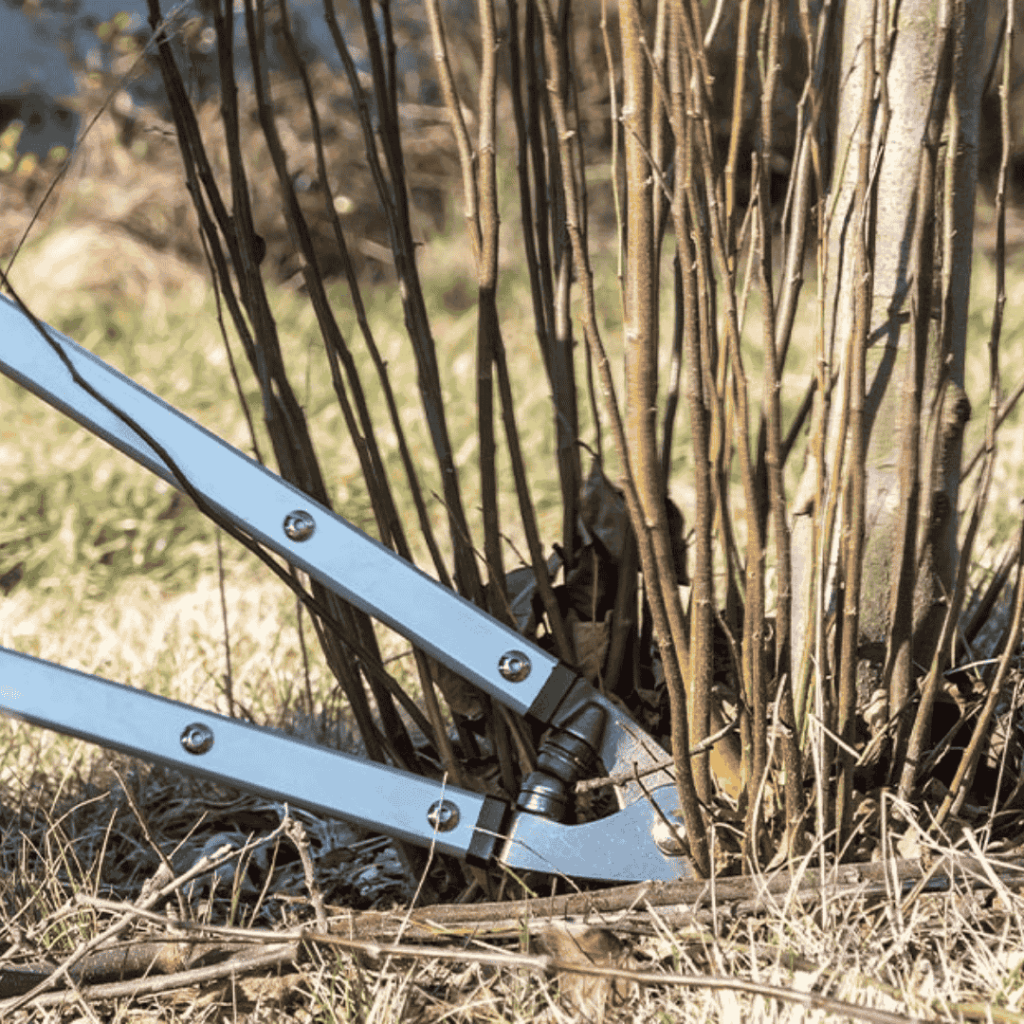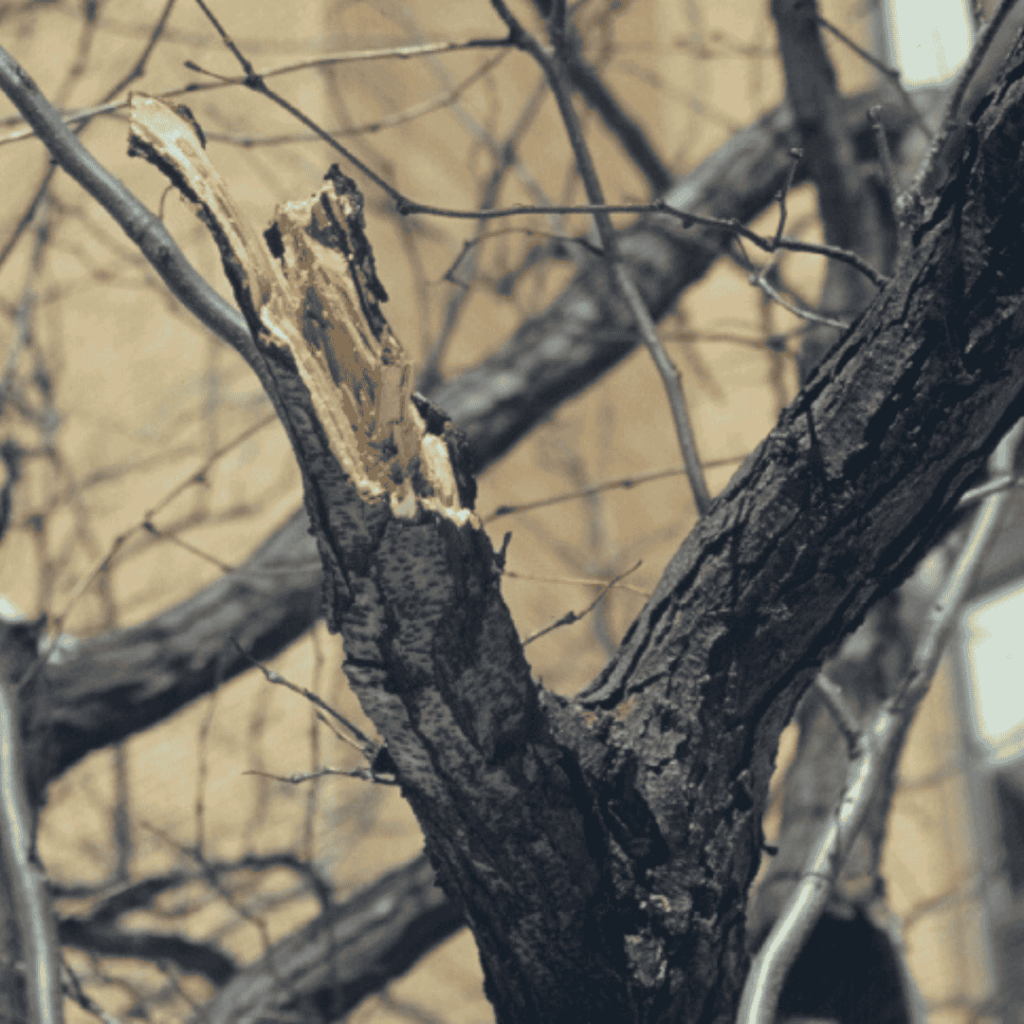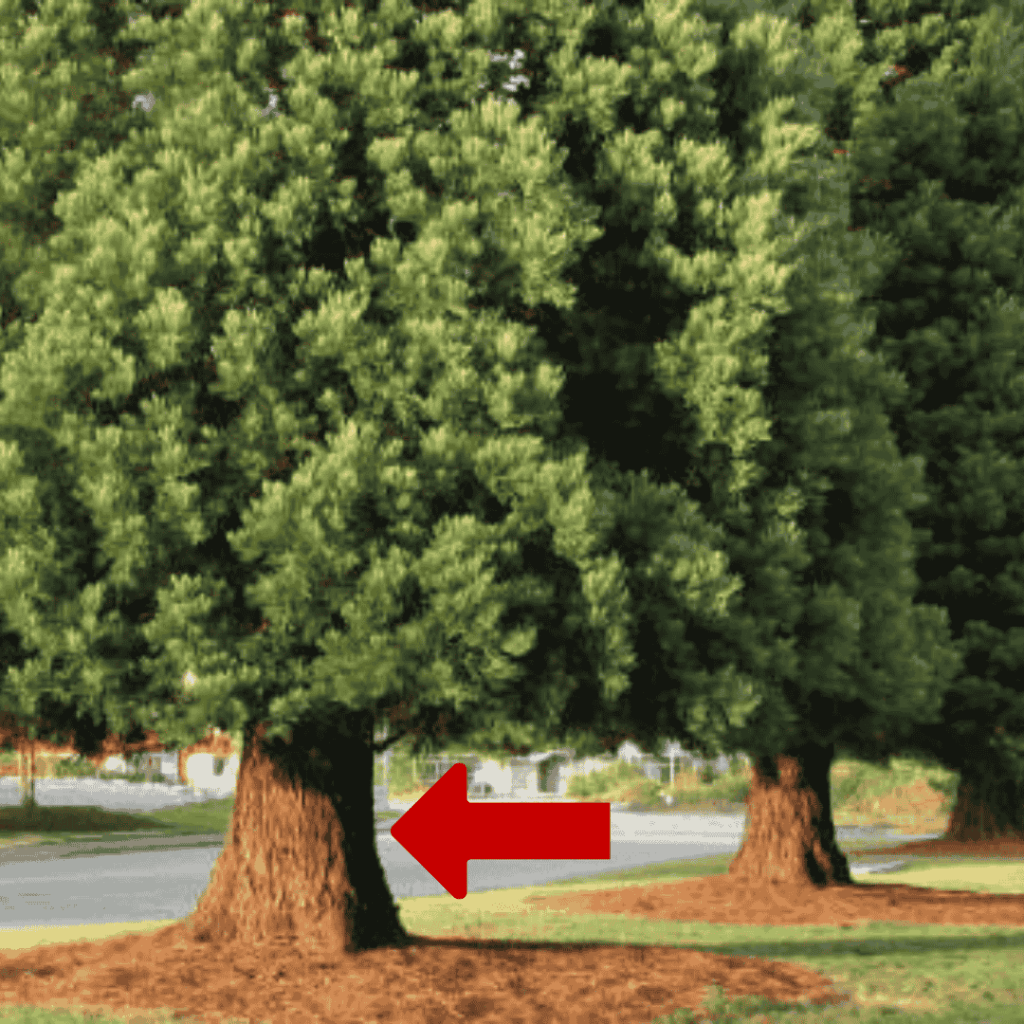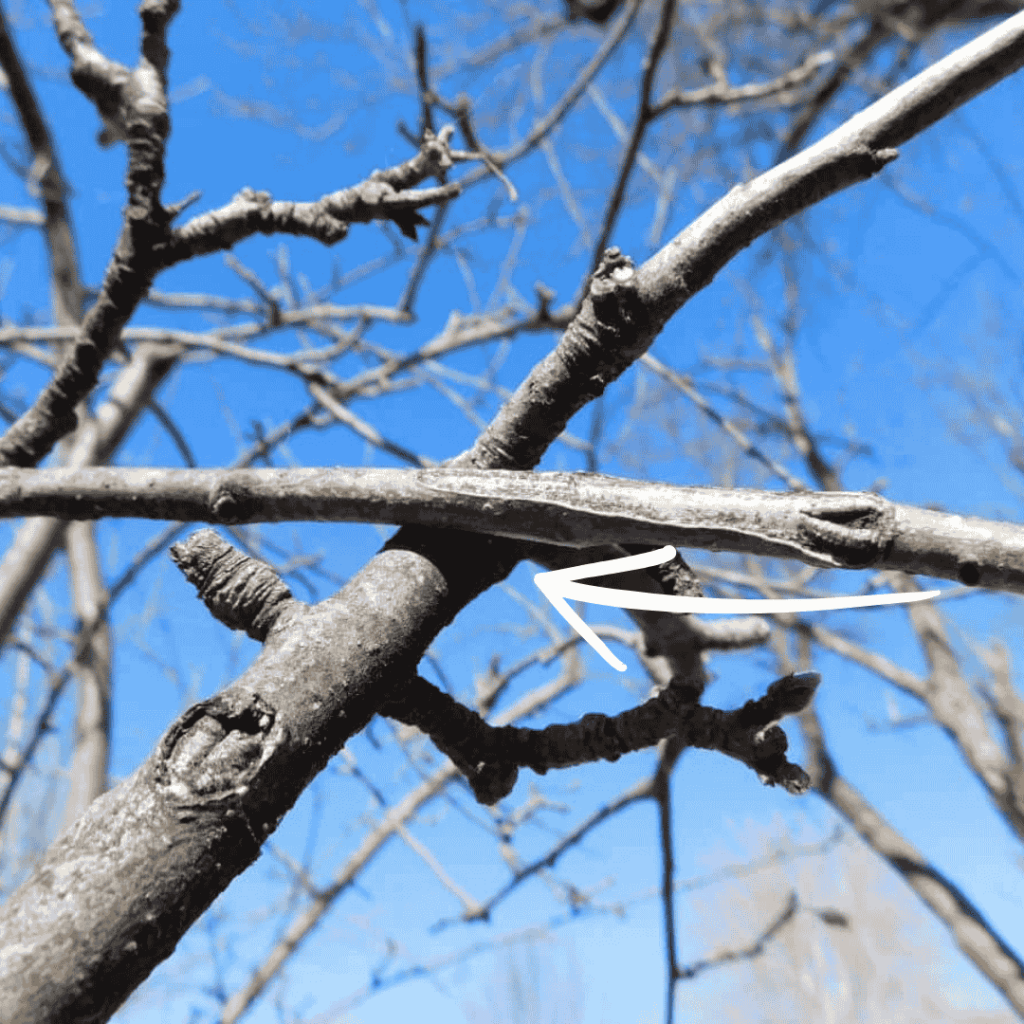It can be intimidating emBARKing on pruning your tree. Pun not intended but totally enjoyed! Ok back to business. Tree pruning! If you have a tree you should take the time to read this article to arm yourself with some helpful rules of pruning that we refer to as, The Five S’s. The first step though is sanitizing your pruners or loppers as to not contaminate your tree with any bacteria or fugus. Hey, sanitize starts with an S too. The Six S’s is a bit of a mouthful though so we will just stick with the 5 below.

1. Suckers – prune out all suckers from around the base of the tree, not all trees will have suckers. The smaller branches that are growing up from the base of the tree around the main trunk in the picture to the right are suckers. These sap nutrients and water from tree. They are also not aesthetically pleasing.

2. Stiffs – prune off all dead, broken or diseased limbs from the trunk and canopy. Cut these limbs or branches all the way back to the trunk or tree limb.

3. Skirting – prune off all small and sagging limbs from the lower part of the tree. Consider maintenance work, such as lawn mowing when choosing the desired height from the ground. Never skirt up more than 1/3 height of the tree.
The picture to the left is a good example of a well skirted tree. The arrow points to the area of the trunk that has been skirted to achieve this nice showing of trunk.

4. Structure – prune out all crossing limbs, limbs that are rubbing together and any limbs growing in toward the trunk. Limbs should grow outward from trunk and have adequate space for air movement. All limbs should be strong, with good attachment to the trunk.

5. Shape – prune all limbs growing outside of the general shape. Most trees grow in an excurrent (Christmas tree) or a decurrent ( shade tree) shape.
Remember not to prune more than 25%-30% of the canopy when pruning. Pruning can be a process, it may take years to reach your desired look or shape! Take your time so that you tree is never over pruned resulting in stress.
When possible, pruning trees when they are young helps create a happy and healthy tree. A younger tree will respond to pruning much better than an aging or older tree. Also pruning your trees to achieve a healthy structure when they are small will definitely save time and money in the future. Ultimately sparing you from having to call an arborist for help! If you’re local, check out the current trees available at the nursery here, and stop by or call to get a free consultation about your selection.



